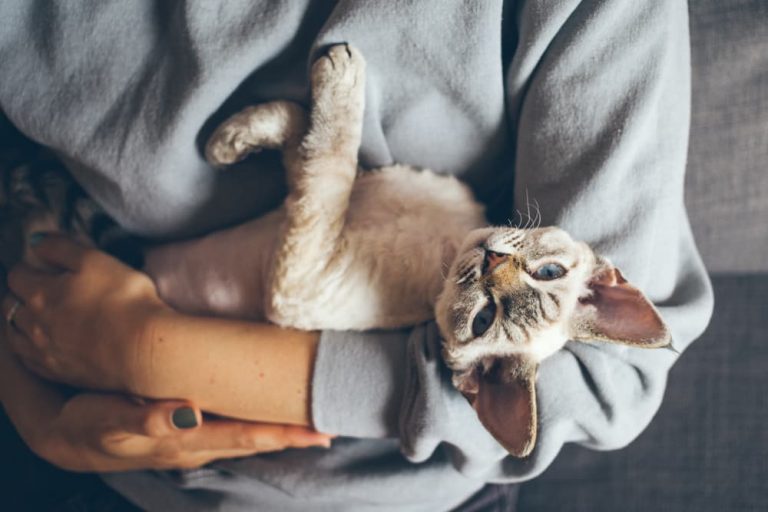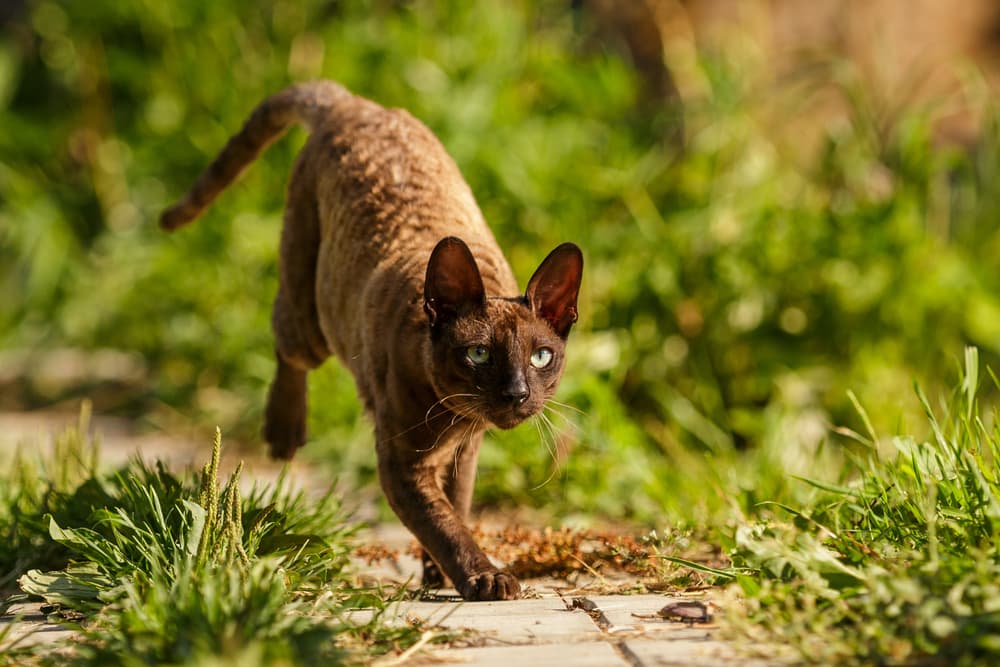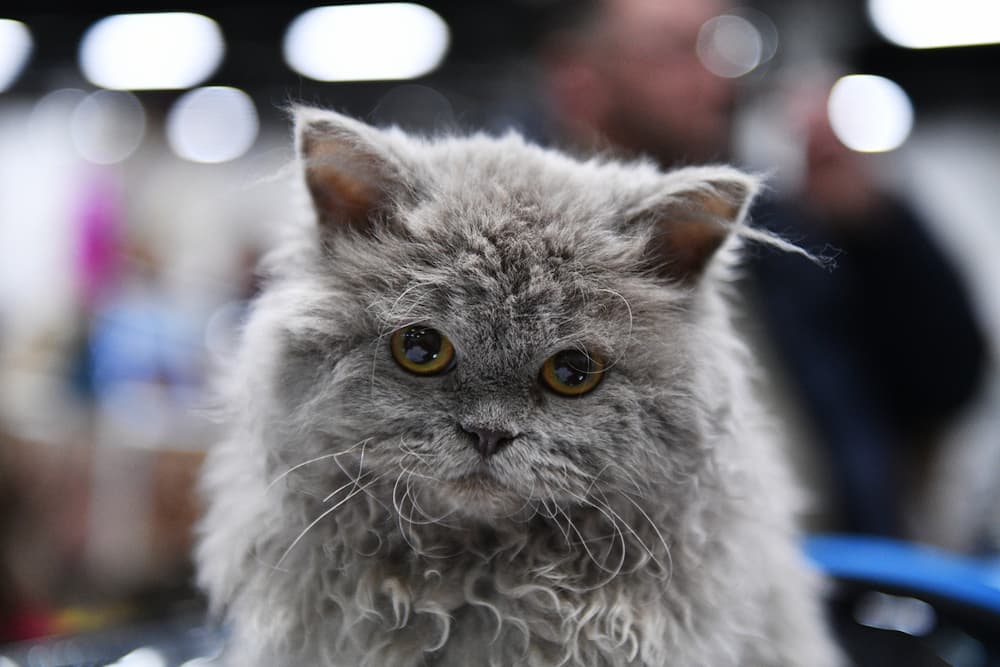8 Rex Cat Breeds to Know

If you’ve dreamt of having a cat that’s as unique on the outside as they are on the inside, a Rex cat might be the one for you. You’ve likely heard of (or even met) some of the most well-known breeds of these wavy-haired cats—like the Devon Rex, Cornish Rex, and Selkirk Rex. But these popular Rex cats aren’t the only cat breeds with that distinctly curly coat.
What is a Rex Cat?
The descriptor “Rex” describes the curled coat of the cat, says Teresa Keiger, a Cat Fanciers’ Association (CFA) all-breed judge. Rex cats are domestic cats recognized by their rippled, wavy, or curly coats.
There are several types of Rex cats, each sharing a similar name and coat type. But Rex cats are separate and distinct breeds that developed independently from one another thanks to spontaneous genetic variations.
“All Rex cat breeds came from a different spontaneous mutation in different cats,” Keiger explains. “The genetics behind each breed’s curl effect is completely different both in appearance and in its DNA.”
The genetic mutation for curly hair in cats is fairly rare. And when selectively bred, these coats occur in a variety of lengths, textures, and colors. But that’s not the only thing that differs in Rex breeds. Besides their adorable curly coifs, Keiger says each Rex cat breed “varies in almost every way possible.”
8 Rex Cat Breeds

There’s no denying that wavy-haired cat breeds are incredibly adorable, and most of them have personalities to match! Plus, there are tons of great naming options for these curly cuties (think: Teddy, Chewie, Bear, and Rapunzel).
If you’re looking to add a cat with a curly or wavy coat to your family, consider one of these eight different Rex breeds:
- Cornish Rex
- Devon Rex
- Selkirk Rex
- LaPerm
- German Rex
- Tennessee Rex
- Ural Rex
- Tasman Manx
Cornish Rex

According to Keiger, the Cornish Rex is the first known curly cat breed. A curly-haired barn kitten in England named Kallibunker is credited with carrying the first genetic mutation for the Cornish Rex breed. From the 1950s on, Kallibunker and his offspring were selectively bred with Burmese, Siamese, and British domestic shorthair cats. The result was a new exotic cat breed with large, bat-like ears and incredibly soft, curly fur.
“Cornish Rex cats are very active and do well in a household with a lot of activity,” Keiger says. Almost doglike (and often compared to the build of a Whippet), the breed is adored for antics like playing fetch and picking up their favorite toys with their agile paws.
Devon Rex

Keiger describes this England-born Rex cat as being “full through the belly with high cheekbones and large ears that flare out at the base.” Their unique features give them what many describe as an elfin appearance. Their curled coat is short and soft, appearing more rippled than tightly curled. Devon Rex cats come in all patterns and colors, from white to brown, tabby and tortoiseshell.
These wide-eyed cats have a clownish demeanor and are known to entertain their human companions well into their senior years. “Devon Rex cats bond very closely with their owners and like to be with them as much as possible,” Keiger says. So, they’re best suited for a home that offers a playmate or two and quality human-kitty bonding time.
Selkirk Rex

Truly a one-of-a-kind looking kitty, the round-faced Selkirk Rex might resemble a teddy bear more than a cat. Or if they’re white, a cat in sheep’s clothing. This plush, sturdy breed is medium-to-large in size, weighing up to 16 pounds. Their short or long fur can have loose waves or tight spiral curls, depending on the number of genetic variations they’re born with.
The first Selkirk Rex was spotted in a Montana shelter. She was named Miss DePesto and soon found her home with a Persian cat breeder named Jeri Newman. Miss DePesto was bred with a black Persian and produced a litter of both straight-haired and curly-haired kittens. Unlike their straight-haired litter mates, Selkirk Rex cats boast curled whiskers from birth.
These floofy cuties need brushing regularly, but don’t overdo it or they become real frizz balls. Like their teddy bear doppelganger, the Selkirk Rex is a laid-back, happily-go-lucky cat that readily accepts cuddles and affection. They’ll need mental stimulation from interactive toys, puzzles, and play, too.
LaPerm

The LaPerm’s genetic variation was discovered fairly recently (1982) on a farm in Oregon and is the latest CFA-recognized Rex breed to originate, Keiger says. While their hallmark feature is the perm-like appearance of their fur, which can vary in color and pattern, their personalities are just as stunning.
“LaPerm cats seek human contact and will purr as soon as they become aware of your presence,” says the CFA. In fact, another trademark feature of this people-oriented cat is their louder-than-normal purr. When they’re not soaking up their human’s attention, this curious kitty will keep busy playing with other pets and kids – or be pawing at you to play fetch.
German Rex

According to Keiger, the breed standards for the German Rex differ from the Cornish Rex—but they share the same genetic variation for their velvety soft curls. Recognized by the International Cat Federation, the medium-sized breed boasts short, curly whiskers and adorably oversized ears.
Tennessee Rex
It’s not just the personality of the Tennessee Rex that sparkles — this curly-haired cat breed sports satin hairs that shimmer in the sunlight. According to The International Cat Association (TICA), Tennessee Rex kittens are “curly or wooly with crimping at birth,” with their satin sparkle developing as they mature.
Like many other Rex breeds, these medium-to-large cats are people-oriented, curious, and outgoing. “They like to be where the action is,” TICA reports.
Ural Rex

Rarely found outside of their native home of Russia, Ural Rex cats flaunt a tight, flat wave. They have crimped whiskers, high cheekbones, and expressive almond-shaped eyes. Ural Rex catteries dote on the breed for their grace, expression of emotions, and friendly personalities.
Tasman Manx
You might be familiar with the tailless or rumpy-tail manx cat — but have you heard of the curly-haired Tasman Manx? They’re recognized by the New Zealand Cat Fancy, and breeders of this Rex describe the Tasman Manx as “appearing spontaneously in Australia and New Zealand with a relatively dense and frizzled coat.” They have a distinct trill and love to chat with their human companions.
Caring for a Rex Cat

Because of the unique coats of the different Rex cat breeds, many believe they are hypoallergenic. But no breed of cat (or dog) is truly hypoallergenic. Compared to other breeds of cats, the Rex breeds may shed less, but they do still shed. So, if you have cat allergies, you should talk to a doctor before welcoming any pet into your family.
Since each Rex breed is separate and distinct, it’s important to read up on health concerns and care for the breed you’re interested in. “Potential owners should read about each breed’s temperament and activity level to ensure that it will be a good fit for their household,” Keiger adds.
Guide to Buying or Adopting a Rex Cat

It’s not unheard of to stumble upon a Rex cat breed in a shelter—that is, after all, where Miss DePesto was first noticed. But, Keiger adds, it’s also not likely that you’ll find Rex cats readily available for adoption.
“Pedigreed cats—all pedigreed cats—account for only 5 percent of all domestic cats,” she says. “That’s not to say that one might find a cat whose previous owner surrendered them, but most breeders want the owner to return the cat so that they can rehome it directly.”
When it comes to purchasing a Rex cat from a breeder, prices can vary. Curled favorites like the Devon Rex and Cornish Rex are bred throughout the U.S., but more rare breeds like the Tennessee Rex and Ural Rex are harder to come by — and likely come with a higher price tag.
“A responsible breeder is interested in the health and welfare of their cats. They’re concerned about the cat’s new owners and want to make certain that there’s a good fit between the owner and the cat,” Keiger explains.
So, expect the breeder to ask a lot of questions about yourself, your household, and your experience with cats. When you work with a reputable breeder, you and your cat will be on the right path to a happy and healthy life together.









